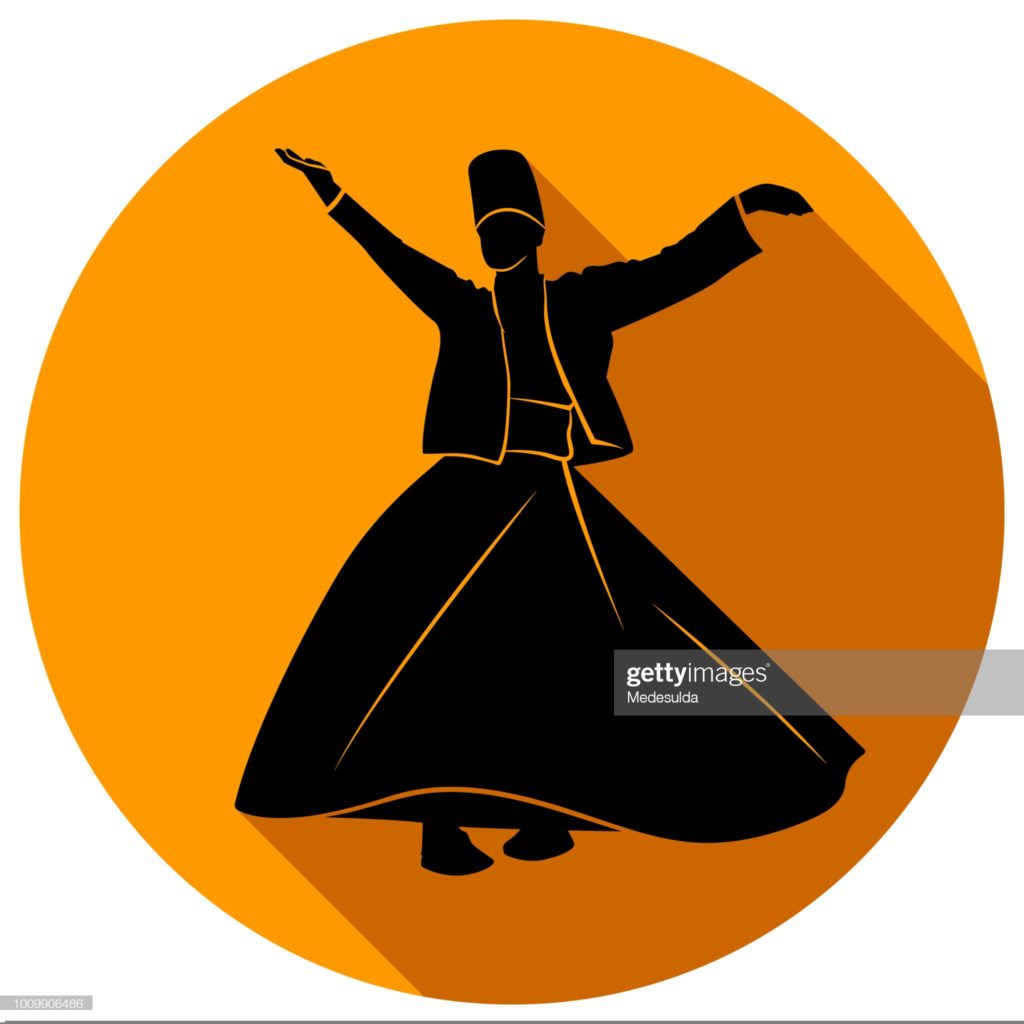
Everyone enjoys humming to the song Kun Faya Kun (Rockstar, 2011) and find themselves lost in its lyrics. A lot of people love Sufi songs for they leave a spiritual touch on our souls. We tend to escape reality in the words of Rumi and Ghalib. We cherish these little things and today when everyone is drifting apart, there is a need to accept and know more about these terms.
The terms Sufi and Sufism evoke complex layers of meanings. Sufism is an amalgamation of a spiritual practice called “taṣawwuf” which involves transmission and recitation of litanies, both individually and collectively; usually with a goal of cultivating spiritual experiences with the divine. It consists of a variety of mystical paths that are designed to ascertain the nature of humanity and of God along with facilitating the experience of the presence of divine love and wisdom in the world. As per the recent research, Sufism has for centuries been central to mainstream Islam and continues to thrive globally among all social classes. Though developed outside India, Sufism has become an intrinsic part of our culture. It can be found in art, literature, culture, language, philosophy, and theological ideas. In the words of historian Rana Safvi, “Sufism is the mystical dimension of Islam and a Sufi is a person who has emptied his/her heart of ego and negativity, and filled it with the remembrance of God.”
The early spread of Islam in India was strongly influenced by the Arab traders who were responsible for the arrival of Sufi saints to the Western and Eastern coast of the Indian subcontinent. The Sufi Shaikhs (evolved at the spiritual level) came to occupy a place of pride in the society; most of them were patronized by kings. Because of their powerful spiritual attainments, noble deeds, and liberal out looking, they left an indelible imprint on the socio-religious set up of India. Of the many Sufi orders (Silsilas) that have arisen in the world of mystic Islam, India became a hospitable home for a large number of Sufis. During the Sultanate period of three hundred years, Sufism had spread to every nook and corner of the country. Khwaja Muinud–din, the founder of Chishtiyya order in India was considered one of the earliest prominent Sufi saints of North India.
Sufism has always been flexible and united people across regions, religions, and cultures. The doors of khanqah (hospice) have always been open for everyone. This concept of mutual respect between religions has persisted through the development of Sufism. Sufi saints in India were viewed as protectors of all interests. The Sufis in India became the ambassadors of cultural integrity and social harmony. Many historians have argued that networks established by early Sufi saints in India demonstrated their fidelity to the Islamic concept of peace between differing belief systems.
Rumi, the most renowned Sufi saint in the literary world attracts the audience around the globe. His work continues to influence people irrespective of time, place, and distance. Most of his works were a result of the loss of his beloved friend Shams of Tabriz. His longing for Shams led to the outpouring of more than 40,000 verses, including odes, eulogies, and other styles of East Islamic writing. People connect to his works and find solace in them albeit it was written centuries ago; that’s the power of his words.
What makes Sufism more open and acceptable is the fact that there is no stress on the materialistic rituals and laws but on the connection between an individual and God which is personal and pure. A way of devotion, Sufism attracts everyone and provides peace which has become the hardest to find. Many youngsters feel Sufi songs help them to experience inner peace and wade through gloomy days. As we know music heals and even doctors advise listening to peaceful music to enlighten one’s mood. Sufi music plays a pivotal role in this. Many young artists and musicians have been composing their new track centred on this theme.

In this fast-paced world, Sufism is losing its essence. Music and dance have been an important part of Sufism called sama, which means, listening. It is a Sufi ceremony performed as dhikr(remembrance). These rituals often include singing, playing instruments, dancing, recitation of poetry and prayers, wearing symbolic attire, and other rituals. It is a particularly popular form of worship in Sufism. These rituals are an intrinsic part of our cultural heritage which needs to be preserved and promoted. However, Sufism is much more than music and dance, it is divine and spiritual in nature. In words of Sonam Kalra, who is synonymous with her band Sufi Gospel Project, “Sufism is an acceptance of all humanity as equal. It is a way of life, a way of thinking, where you are so connected to the ‘Beloved’ that you see divinity in every being and in everything”.
Looking at all these aspects, we cannot deny that Sufism holds a significant impact on the present generation, it has united them, helped them to see divinity in common things. In a world, where things have become materialistic and everyone is driven by selfish ulterior motives, we need to hold on to appreciate the beauty around us and Sufism has provided that space. Sufism continues to attract people of socioeconomic, educational, and ethnic backgrounds worldwide. Although the place of Sufism has indeed evolved in modern times, contrary to modernists’ and Islamic reformists’ expectations, Sufi practice and communities are flourishing globally. Sufism has provided guidance to mankind in all ages and shall continue to do so. Sufism teaches us that it is possible for us to see the world beyond our imagination. “Sufism is a reality without a form”.
Azra is pursuing her graduation in history from LSR. Being an avid reader, her interest lies in reading, writing, history, politics, society and exploring new areas.

